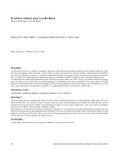Mostrar o rexistro simple do ítem
El edificio eclesial para Lina Bo Bardi
| dc.contributor.author | Fiorini, Barbara | |
| dc.contributor.author | Catalano, Sarah | |
| dc.date.accessioned | 2019-05-30T12:01:03Z | |
| dc.date.available | 2019-05-30T12:01:03Z | |
| dc.date.issued | 2005 | |
| dc.identifier.citation | Fiorini, B., & Catalano, S. (2017). El edificio eclesial para Lina Bo Bardi. Actas De Arquitectura Religiosa Contemporánea, 4, 194-203. https://doi.org/10.17979/aarc.2015.4.0.5133 | es_ES |
| dc.identifier.issn | 2340-5503 | |
| dc.identifier.uri | http://hdl.handle.net/2183/23089 | |
| dc.description.abstract | [Resumen] La intervención tiene como objetivo investigar la figura de Lina Bo Bardi, una arquitecta italiana que se trasladó a Brasil en 1946, al final de la Segunda Guerra Mundial, y que durante sus años de actividad en Italia fue también colaboradora del arquitecto Gio Ponti. Se analizará en detalle su arquitectura destinada al culto. Entre el gran número de obras de la arquitecta se encuentran, de hecho, dos pequeñas pero significativas iglesias construidas en Brasil durante los años setenta del siglo pasado. ¿Cuáles fueron las referencias arquitectónicas de Lina Bo Bardi para el edificio de culto? ¿Cómo su formación italiana ha impregnado sus obras y cómo éstas han sido contaminadas por la arquitectura del nuevo continente? Pocos años atrás, el Concilio Vaticano II había dado nuevas indicaciones litúrgicas. Nos podemos preguntar si la apertura litúrgica fue considerada en su obra como parte del discurso arquitectónico utilizado o si, simplemente, se tomó como un dato sobrevenido. | es_ES |
| dc.description.abstract | [Abstract] This intervention aims to investigate the figure of Lina Bo Bardi, an Italian architect who moved to Brazil in 1946, at the end of the Second World War, who during his years of activity in Italy was also collaborating with the architect Gio Ponti. Bo Bardi sacred architecture will be discussed in detail. Among the large number of works by the architect are, in fact, two small but significant churches built in Brazil in the seventies of the last century. What were the Lina Bo Bardi architectural references to the place of worship? How her Italian training has permeated her work and how they have been contaminated by the architecture of the new continent? A few years before, the Second Vatican Council had given new liturgical indications. We can wonder if the liturgical opening was seen in his work as part of the architectural discourse used or if it simply was took as a fact occurred. | es_ES |
| dc.language.iso | spa | es_ES |
| dc.publisher | Universidade da Coruña | es_ES |
| dc.relation.uri | https://doi.org/10.17979/aarc.2015.4.0.5133 | es_ES |
| dc.rights | Atribución-NoComercial 4.0 España | es_ES |
| dc.rights.uri | http://creativecommons.org/licenses/by-nc/3.0/es/ | * |
| dc.subject | Lina Bo Bardi | es_ES |
| dc.subject | Arquitectura religiosa | es_ES |
| dc.subject | Arquitectura brasileña | es_ES |
| dc.subject | Concilio Vaticano II | es_ES |
| dc.subject | Sacred architecture | es_ES |
| dc.subject | Brasilian architecture | es_ES |
| dc.subject | Second Vatican Council | es_ES |
| dc.title | El edificio eclesial para Lina Bo Bardi | es_ES |
| dc.title.alternative | Church Building by Lina Bo Bardi | es_ES |
| dc.type | info:eu-repo/semantics/article | es_ES |
| dc.rights.access | info:eu-repo/semantics/openAccess | es_ES |
| UDC.journalTitle | Actas de Arquitectura Religiosa Contemporánea | es_ES |
| UDC.volume | 4 | es_ES |
| UDC.startPage | 194 | es_ES |
| UDC.endPage | 203 | es_ES |






